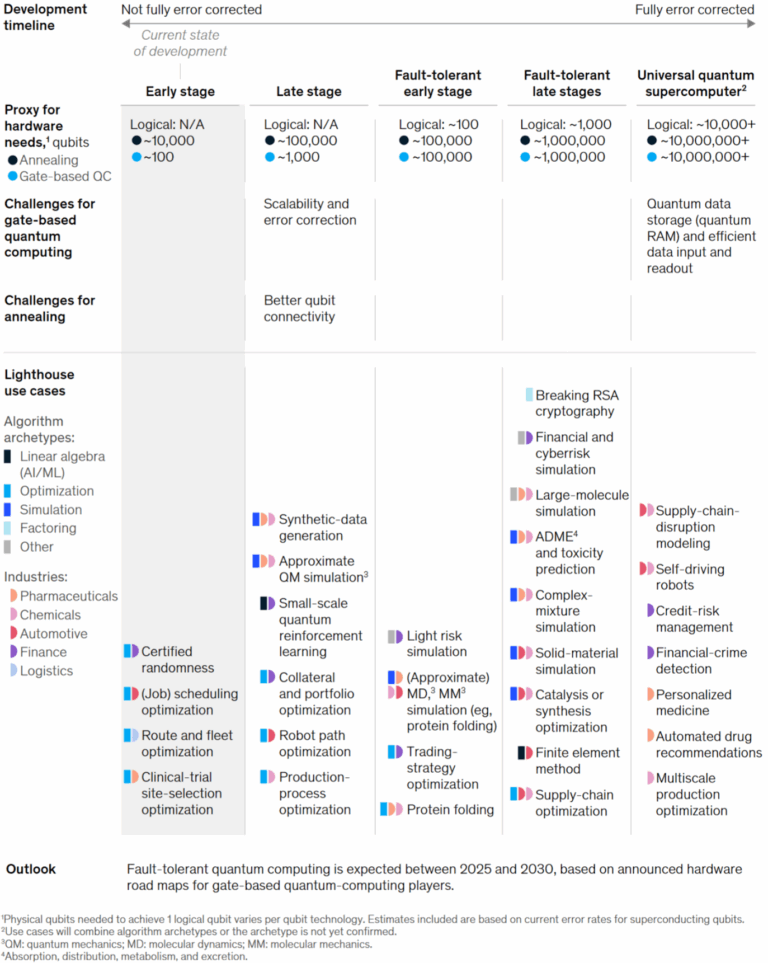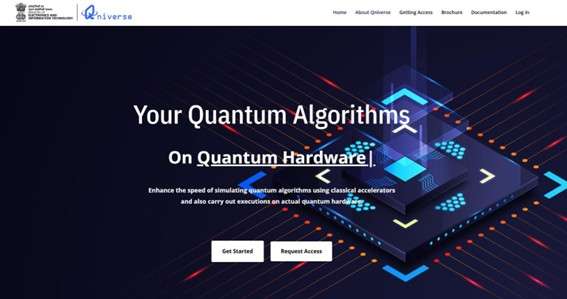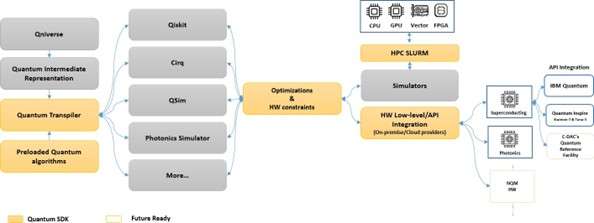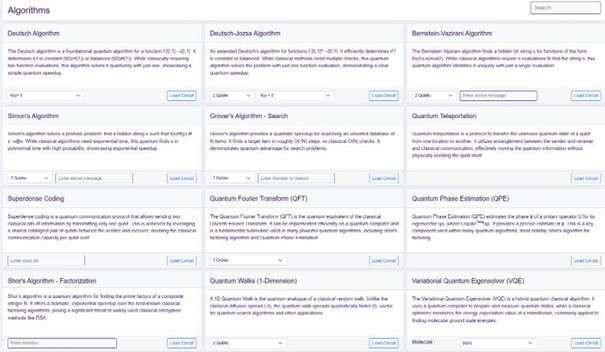Quantum computing applies the principles of quantum mechanics to tackle computational problems that are either beyond the capabilities of classical computers or can be solved significantly faster than with conventional methods. Its potential is vast—from accelerating drug discovery to revolutionizing financial modelling—as quantum hardware matures (See Figure 1). However, significant challenges remain.

Figure 1: Quantum Computing Hardware Use Cases. Source: McKinsey and Co Quantum computing: An emerging ecosystem and industry use cases
Today’s ecosystem, however, is highly fragmented: leading providers such as IBM, Google, Microsoft, Rigetti, Xanadu, and D-Wave each offer distinct qubit technologies, programming languages, SDKs, and execution paradigms. This diversity imposes steep learning curves on developers, who must master vendor-specific tool chains, grapple with non-standardized interfaces, and engineer bespoke integrations for hybrid quantum–classical workloads. The lack of interoperability and universal programming models further complicates efforts to port or scale quantum applications across different backends. Add to that the inherent complexity of quantum mechanics and a scarcity of educational resources, and the field becomes daunting for newcomers.
Need for a Comprehensive Quantum Ecosystem
Qniverse aims to tackle these challenges through a Unified Quantum Computing Platform that eliminates the complexity of vendor-specific APIs and hardware differences (see Figure 2). It offers a consistent environment for designing quantum algorithms, testing, and validating simulations using software frameworks on High Performance Computing systems (HPCs) and executing the same code seamlessly on classical accelerators (like GPUs, FPGAs, and vector processors), as well as on actual quantum hardware. Through its hardware-agnostic runtime, developers can prototype and debug quantum algorithms locally, using classical simulators, before deploying to physical quantum processors (see Figure 4).

Figure 2: Qniverse – Unified Quantum Platform
Qniverse offers a complete ecosystem built to support users at every stage of their quantum journey. At its core is the Quantum Software Development Kit (QSDK), a robust set of frameworks, libraries, and programming language features that enable seamless interaction with both quantum circuit simulators and hardware (see Figure 3).

Figure 3: Qniverse – High level architecture

Figure 4: Qniverse’s Advanced debugging tools
Key advantages of Qniverse:
- Reduced development time: Qniverse unifies the entire development lifecycle, circuit design, optimization, simulation, execution, and analysis, into a single coherent environment. Its integrated transpiler ingests high-level descriptions applies hardware-aware optimizations (qubit mapping, gate synthesis, pulse scheduling), and emits backend-specific instructions.
- Code once & run on multiple platforms: The Qniverse removes the key bottlenecks in quantum software research, fragmented tool chains and poor code portability. Today, developers must rewrite or adapt circuits for each vendor’s SDK, juggle multiple dialects (OpenQASM, Quil, Q#, Qiskit ) and manually stitch together design, optimization, simulation, and execution steps across superconducting, trapped-ion, neutral-atom, and photonic platforms. Qniverse solves this by offering a truly hardware-agnostic programming model: write your circuits and algorithms once, then execute them unmodified on any supported backend (see Figure 5).
- Simplified hardware access: Integrated with HPCs, the platform enables users to accelerate quantum simulations using classical accelerators such as GPUs, FPGAs, and vector processors and execute on Quantum hardware including IBM quantum processors. Currently, Qniverse supports multiple simulator backends including IBM Qiskit, Google Cirq, Nvidia cuQuantum and QuEST.
- Modular Libraries: The in-built libraries enable users to work with pre-built components and easily integrate them into their workflows, enhancing development efficiency. Whether creating optimization algorithms, machine learning models, or cryptographic protocols, the modular libraries offer the flexibility needed to address a broad spectrum of quantum computing challenges.

Figure 5: Simulate on Classical Accelerators & Quantum hardware
- Algorithm Implementations: The pre-built quantum algorithms that cater to various needs, from foundational principles like Deutsch-Jozsa to advanced solutions like Shor’s factorization algorithm and Grover’s search algorithm. These are complemented with Variational Quantum Eigensolver (VQE), QSVM, QKNN, and OKMeans for Quantum machine learning (see Figure 6). In terms of real-world applications, Qniverse’s pre-built solutions bridge the gap between theoretical concepts and practical implementation – solutions for the socialist millionaire problem via QPC and Quantum Veto Algorithm, which utilizes quantum entanglement for secure voting, and the Harrow-Hassidim-Lloyd (HHL) algorithm, which offers exponential speedup for solving linear systems of equations. These applications have far-reaching implications across industries such as materials science, manufacturing, and artificial intelligence, where optimization, cryptography, and machine learning are crucial.
- Comprehensive-learning ecosystem: For learners, the platform combines theoretical quantum mechanics with hands-on programming tutorials, enabling beginners and experts to upskill efficiently.

Figure 6: Pre-built Quantum Algorithms & Applications
- Future ready: Qniverse is envisioned to provide as a unified quantum computing gateway for accessing the quantum computing hardware developments being carried out as part of the National Quantum Mission. The next version aims to integrate more quantum hardware including Starmon-7 quantum computer from Quantum Inspire, trapped ions, photonics & neutral atoms.
Qniverse is designed to balance performance and accessibility, enabling users from diverse backgrounds to engage with quantum computing effortlessly. Whether you’re a beginner looking to learn Quantum computing or an expert pushing the boundaries of quantum innovation, Qniverse provides the tools and resources to make it happen.
Head over to www.qniverse.in to dive into the quantum realm and experience the platform for yourself. The future of computing is here, and Qniverse is leading the charge—unlocking discoveries and innovations that will shape the world for years to come.
Acknowledgments:
Qniverse is an outcome of the MeitY-funded project “HPC-Based Quantum Accelerators for Enabling Quantum Computing on Supercomputers” [6] implemented by Centre for Development of Advanced Computing (C-DAC) [6].
Authors: Dr. Asvija B. (C-DAC), Dr. Henry Sukumar S. (C-DAC), Dr. Santhosh J. (C-DAC), and Dr. Naresh Raghava (C-DAC)